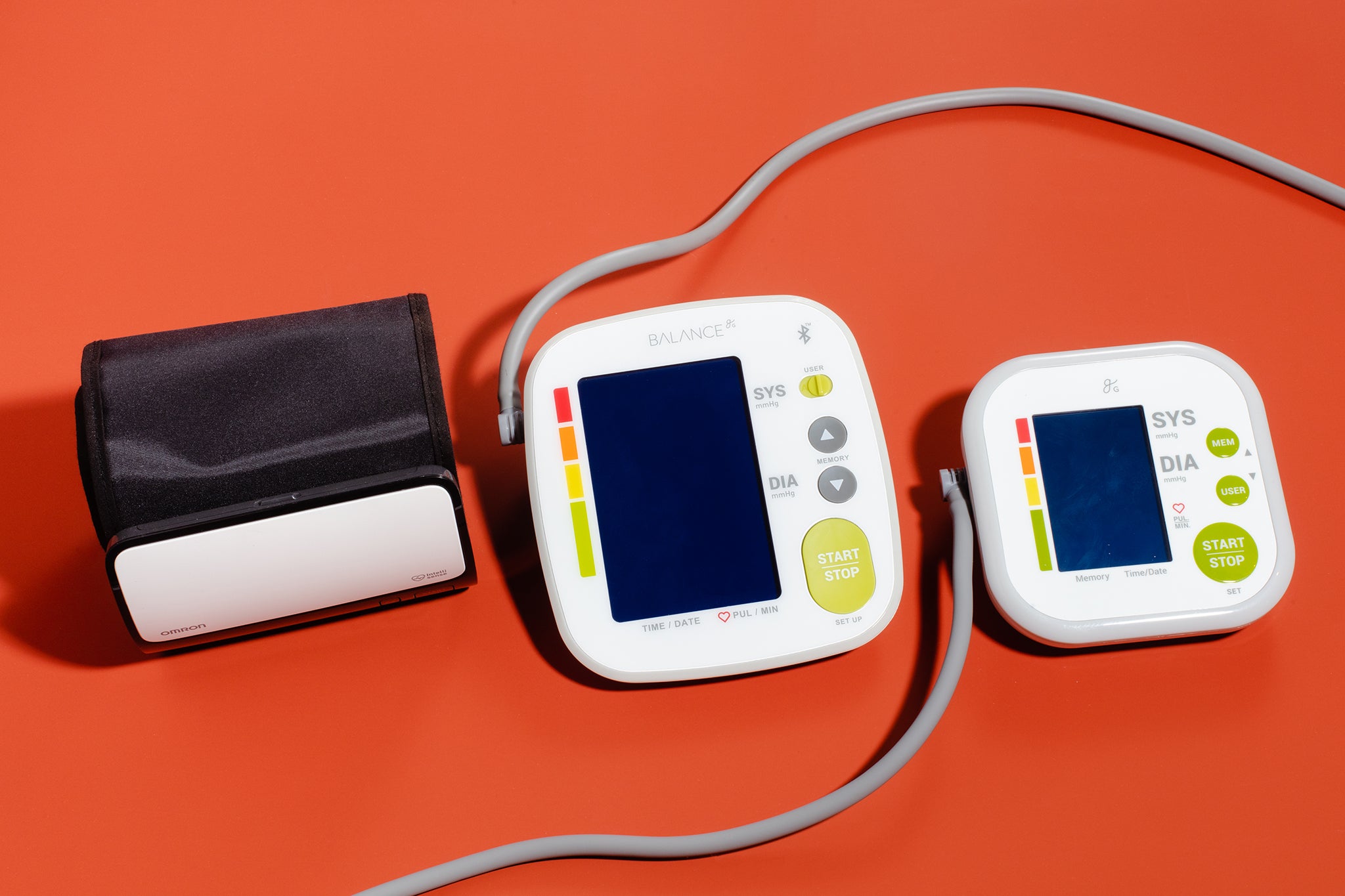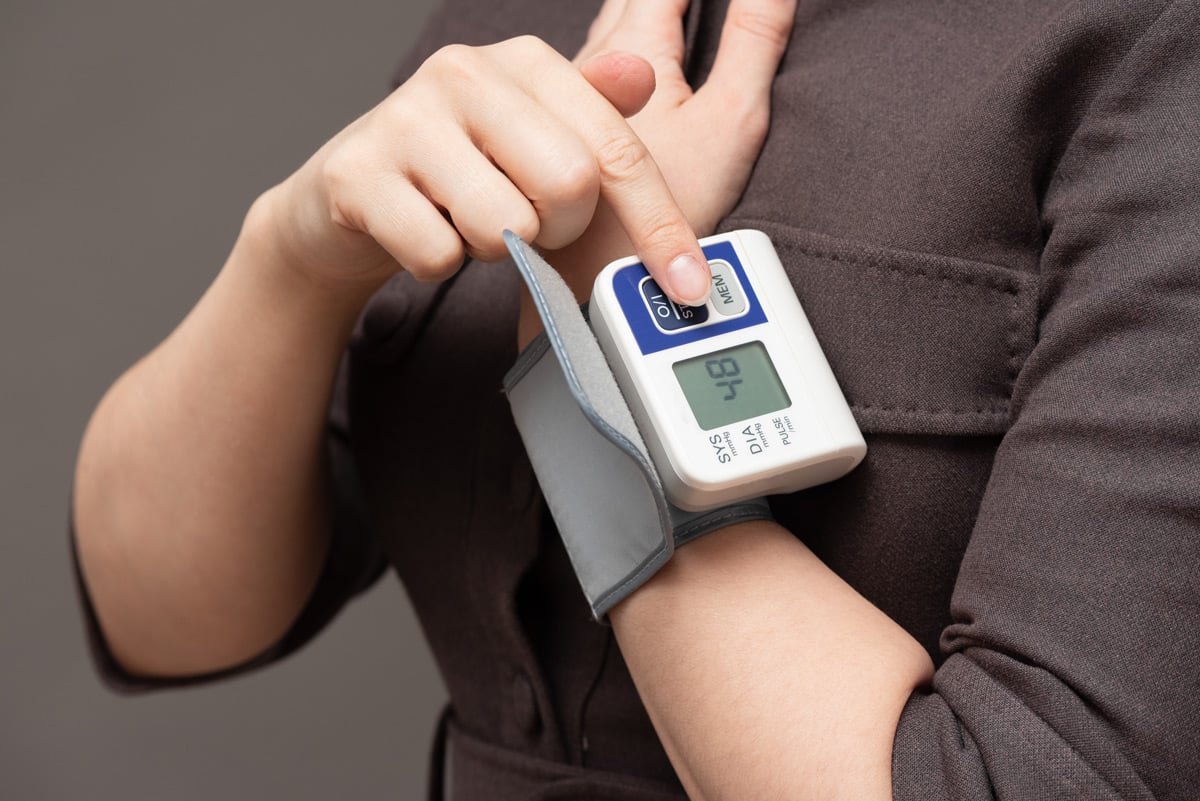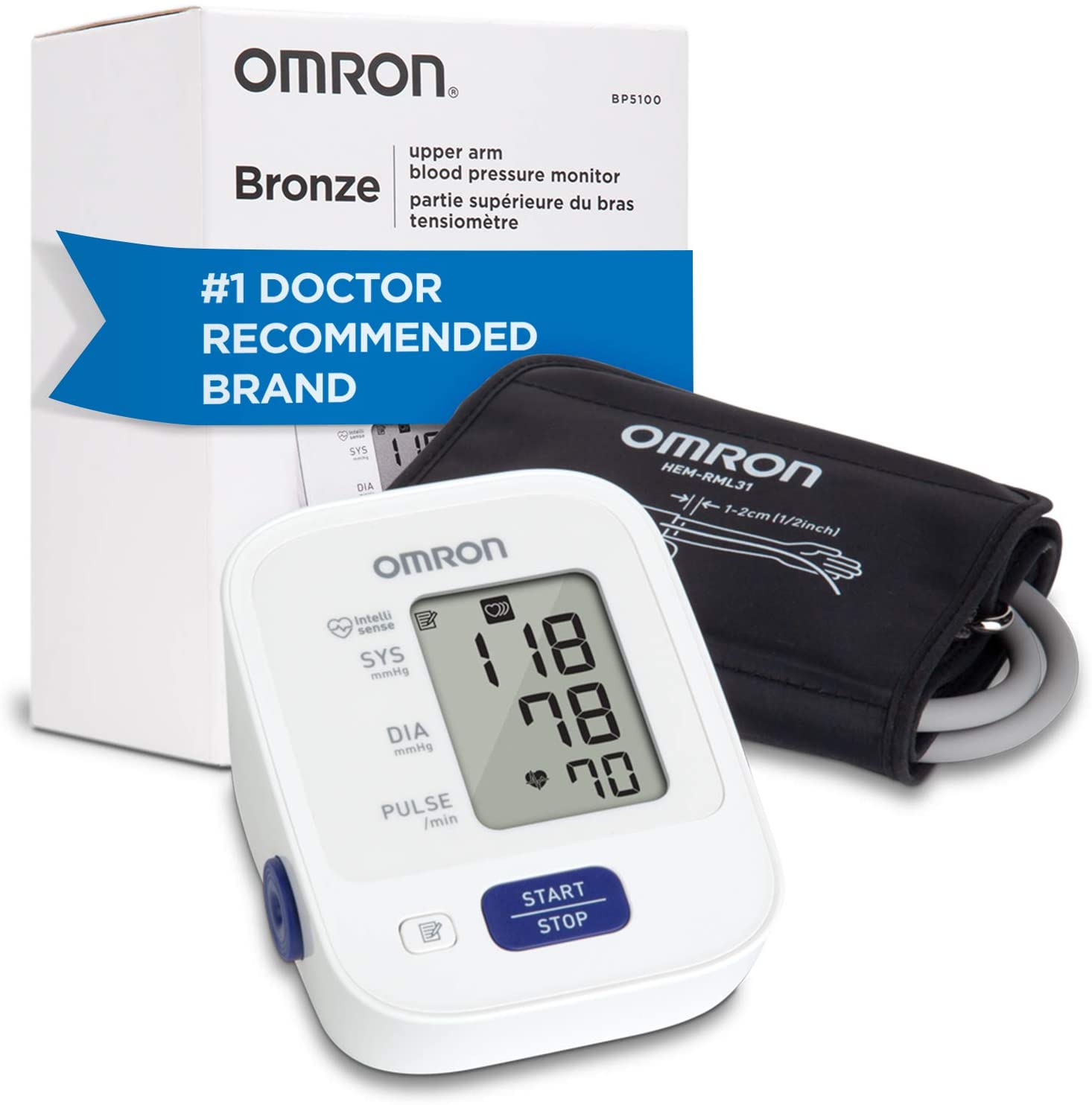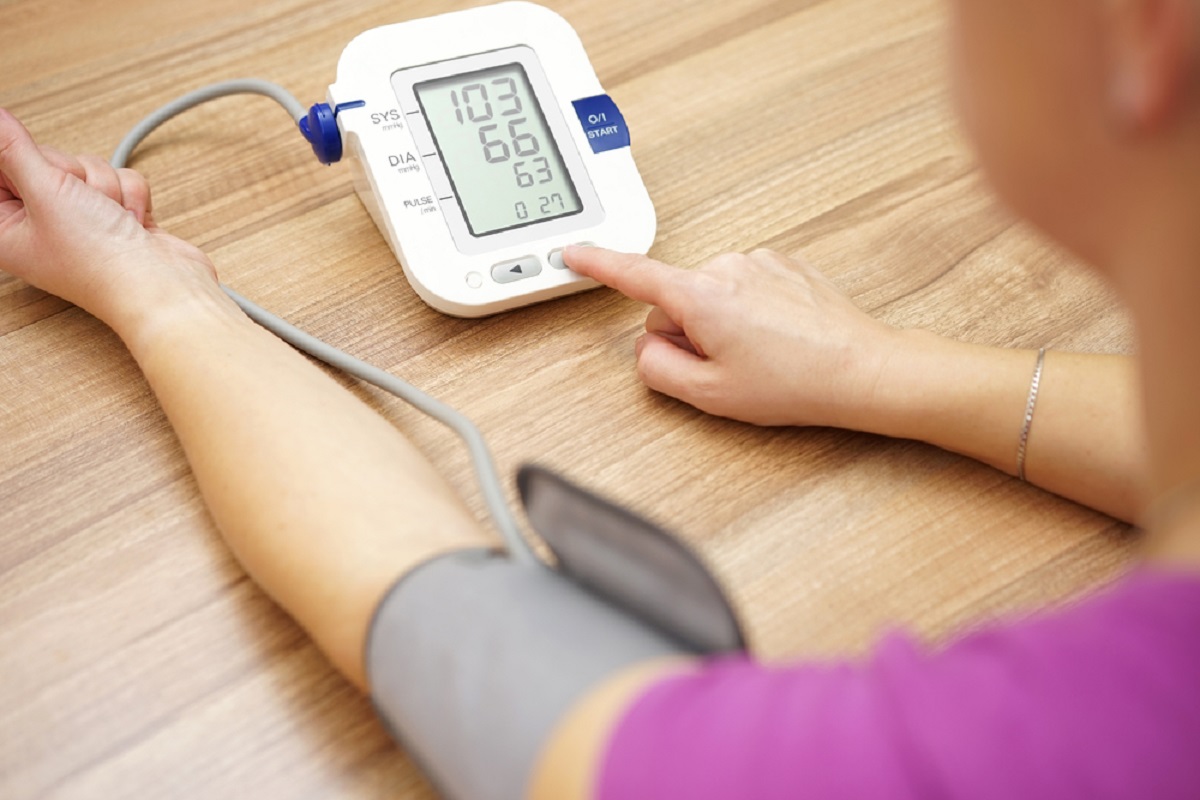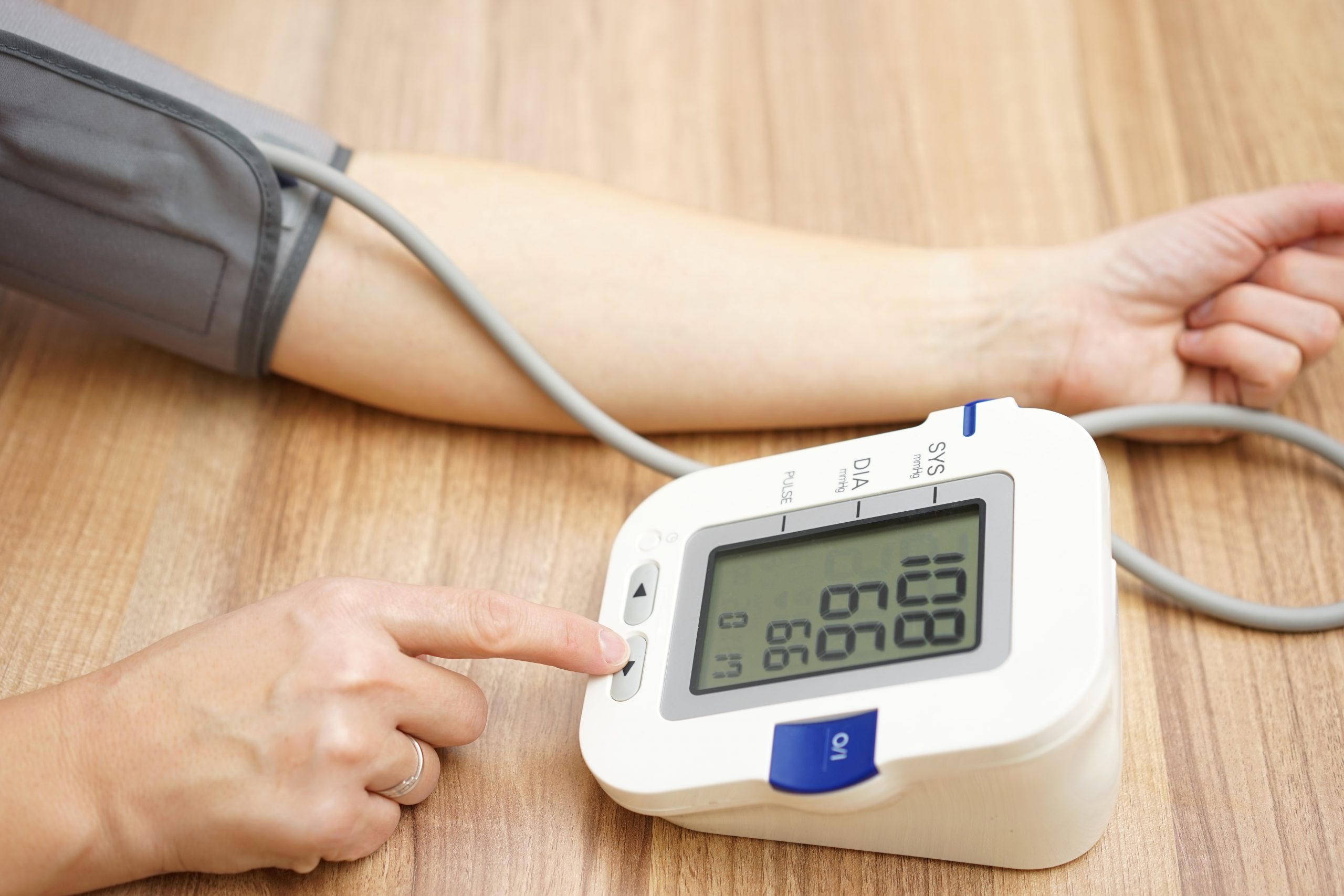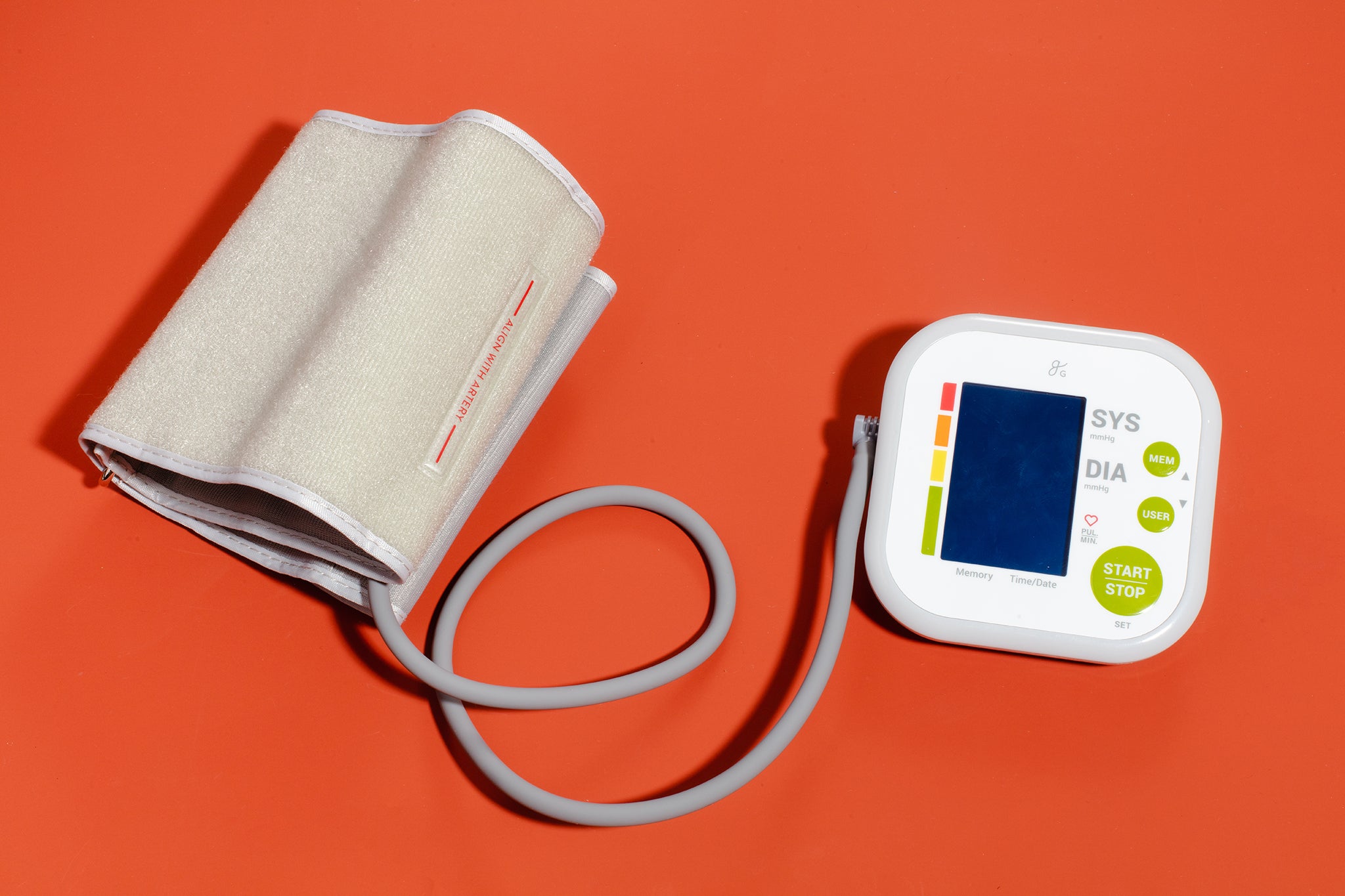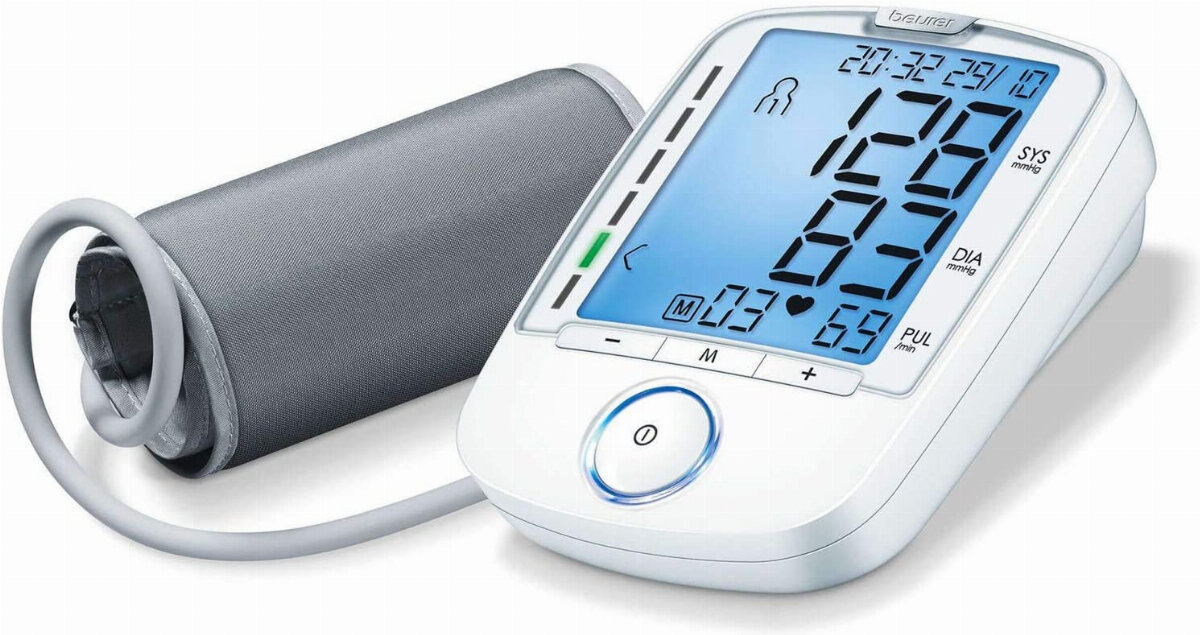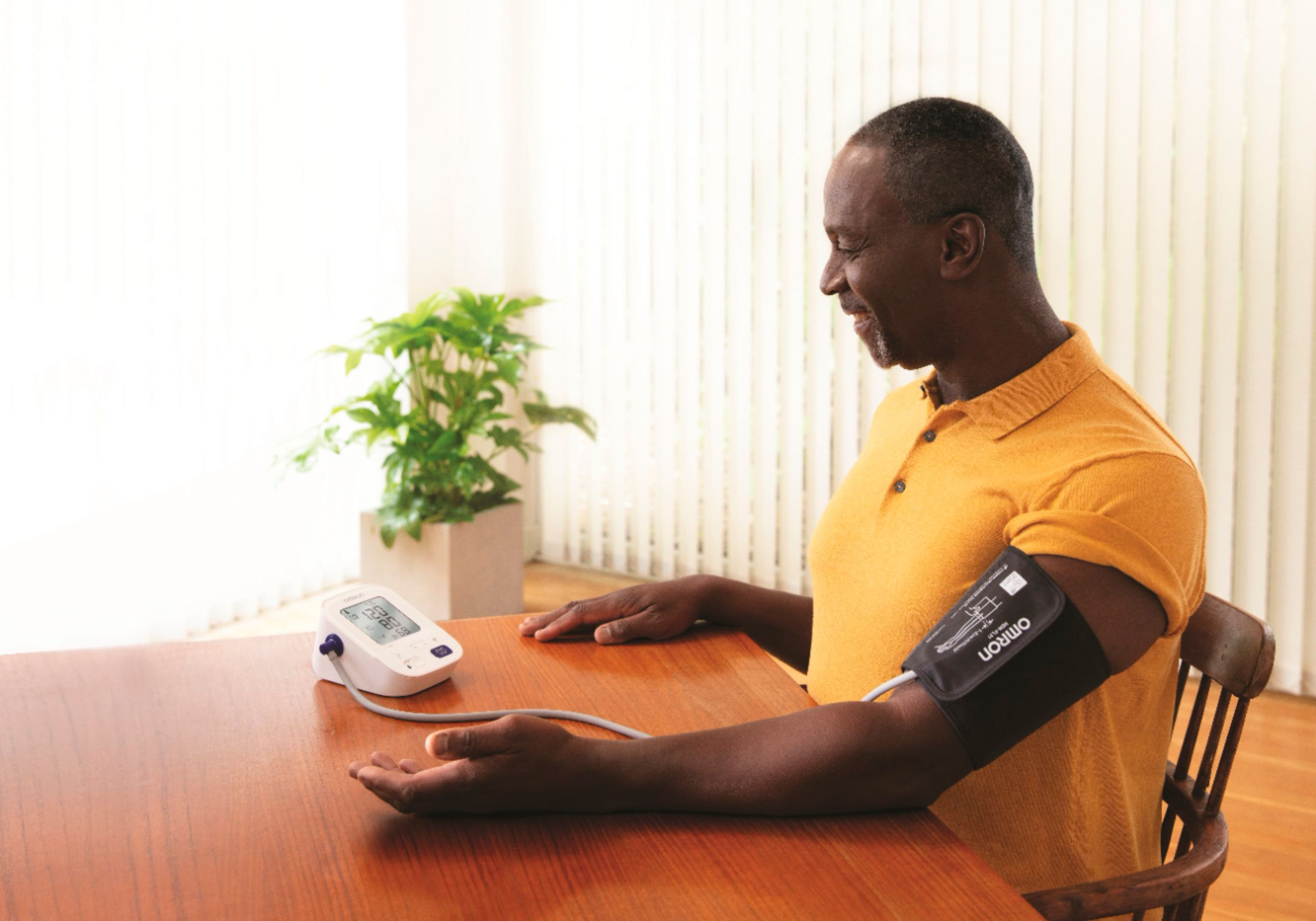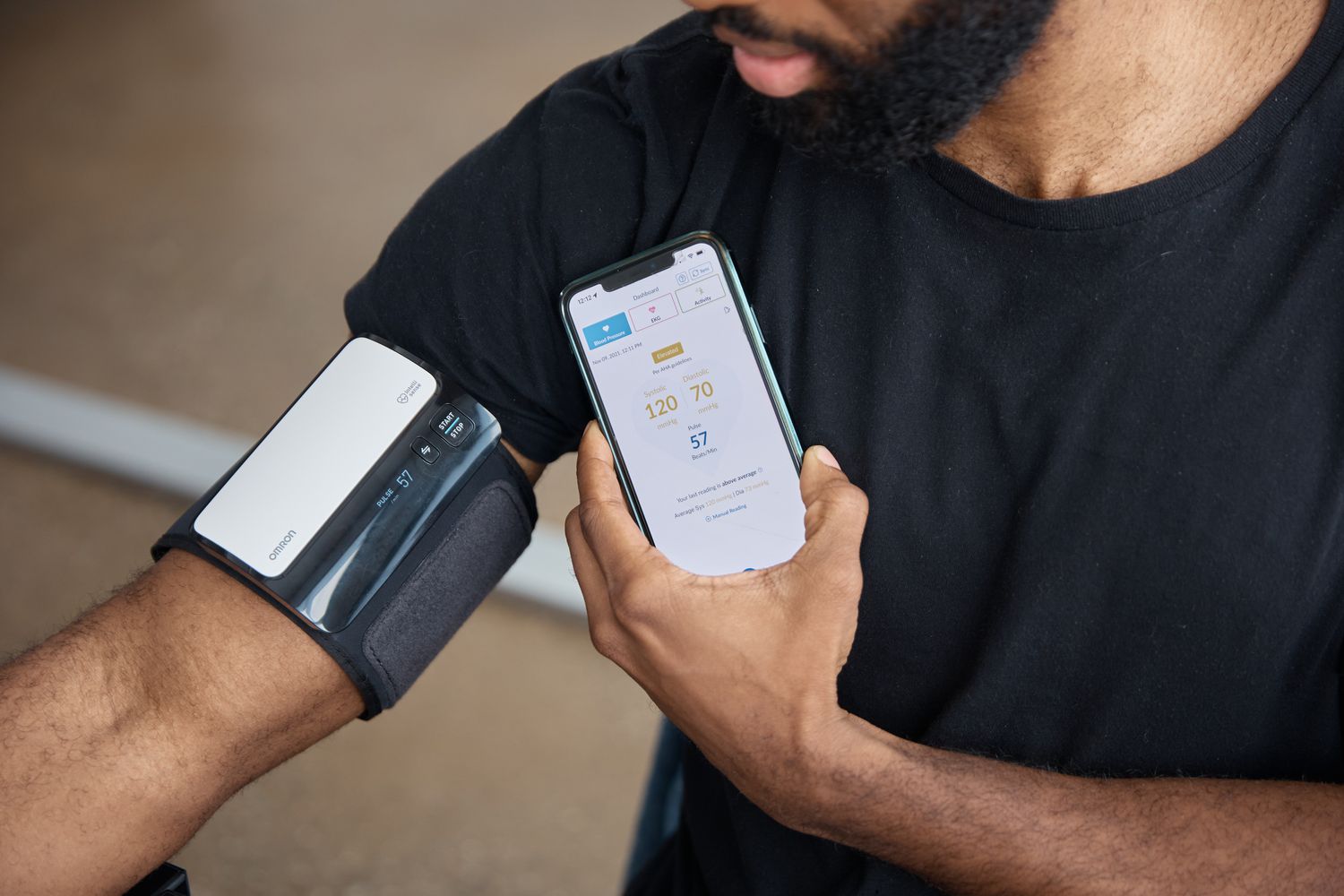Introduction
Welcome to our comprehensive guide on choosing the best home blood pressure monitor. With increasing concerns about cardiovascular health, keeping track of your blood pressure has become more important than ever. By regularly monitoring your blood pressure at home, you can gain valuable insights into your heart health and take proactive steps towards maintaining optimal well-being.
Choosing the right blood pressure monitor for home use can be a daunting task, given the multitude of options available on the market. Factors such as accuracy, ease of use, and functionality should all be considered to ensure that you make an informed decision. In this guide, we will help you navigate through the complexities of choosing a home blood pressure monitor by providing valuable tips and insights.
Monitoring your blood pressure at home offers several benefits. It allows you to keep a close eye on your health without the need for frequent visits to the doctor’s office. This convenience not only saves time but also promotes a proactive approach to your well-being. Additionally, tracking your blood pressure trends over time can help you identify any potential issues early on, enabling you to take prompt action and seek medical assistance if necessary.
Using a blood pressure monitor correctly is crucial to obtaining accurate readings. We will guide you through the proper techniques, including positioning your arm, selecting the right cuff size, and ensuring a relaxed state before measuring your blood pressure. By following these guidelines, you can ensure accurate and consistent readings, providing you with valuable data to manage your cardiovascular health effectively.
When searching for the best home blood pressure monitor, there are certain features you should prioritize. Accuracy, ease of use, memory storage, and digital connectivity are just a few to consider. We will explain these features in detail, helping you understand their importance and how they contribute to an optimal monitoring experience.
In the upcoming sections, we will review some of the top home blood pressure monitors available on the market. We will discuss their key features, pros, and cons, giving you an unbiased overview to assist you in making an informed decision. Our goal is to empower you with the knowledge needed to select a blood pressure monitor that suits your specific needs and preferences.
Whether you are looking to monitor your blood pressure for preventive health or to manage an existing condition, having a reliable and accurate home blood pressure monitor is essential. We hope our guide will serve as a valuable resource for you in making the right choice and taking control of your heart health. Let’s dive in!
Factors to Consider When Choosing a Home Blood Pressure Monitor
When selecting a home blood pressure monitor, there are several important factors to consider. By understanding these factors, you can make a well-informed decision and choose a monitor that best suits your needs. Let’s explore the key considerations:
Accuracy:
One of the most crucial factors to consider is the accuracy of the blood pressure monitor. Look for monitors that are clinically validated and meet the standards set by organizations such as the Association for the Advancement of Medical Instrumentation (AAMI) or the British Hypertension Society (BHS). These certifications ensure that the monitor provides accurate and reliable readings.
Cuff Size and Fit:
To obtain accurate readings, it is important to select a monitor with the right cuff size for your arm. A cuff that is too small or too large can result in inaccurate measurements. Most blood pressure monitors come with adjustable cuffs that fit a range of arm sizes. Measure the circumference of your upper arm and choose a monitor with a cuff size that corresponds to your measurement.
User-Friendliness:
An easy-to-use blood pressure monitor is essential, especially if you are not familiar with medical devices. Look for monitors with clear and intuitive instructions, large display screens, and straightforward button controls. Additionally, features like one-touch operation and automatic inflation can enhance user-friendliness.
Having a monitor with memory storage is beneficial, as it allows you to track and compare your blood pressure readings over time. Look for a monitor with sufficient memory to store multiple readings and consider if the monitor can store readings for multiple users if that is a requirement for your household.
Digital Connectivity:
Some blood pressure monitors offer digital connectivity, allowing you to sync the monitor with a smartphone app or computer to store and analyze your readings. This feature can be valuable in tracking trends, generating reports, and sharing your data with healthcare professionals. Consider whether this functionality is important to you.
Budget:
Set a budget range before starting your search. Blood pressure monitors vary in price, with basic models being more affordable and advanced models with additional features being more expensive. Consider your requirements and choose a monitor that offers the necessary features within your budget.
Customer Reviews:
Take the time to read customer reviews and feedback on different blood pressure monitors. Learning from others’ experiences can provide valuable insights and help you make a well-informed decision. Look for monitors with positive reviews regarding accuracy, ease of use, and overall satisfaction.
By considering these factors when choosing a home blood pressure monitor, you can ensure that you select a device that meets your needs in terms of accuracy, ease of use, and budget. Remember, investing in a reliable and accurate blood pressure monitor is essential for effectively managing your cardiovascular health.
The Benefits of Monitoring Your Blood Pressure at Home
Monitoring your blood pressure at home can provide numerous benefits for your overall health and well-being. Let’s explore some of the key advantages:
Convenience:
One of the primary benefits of home blood pressure monitoring is the convenience it offers. Rather than scheduling regular visits to the doctor’s office or clinic, you can monitor your blood pressure from the comfort of your own home. This eliminates the need for travel and allows you to monitor your blood pressure at a time that is most convenient for you.
Early Detection and Prevention:
Regularly monitoring your blood pressure at home allows you to detect any potential issues early on. By tracking your readings over time, you can identify any significant fluctuations or consistent high readings that may indicate hypertension or other cardiovascular problems. Early detection enables you to take proactive steps to prevent more serious conditions from developing.
Personalized Health Management:
Monitoring your blood pressure at home empowers you to take control of your health. You can monitor the effectiveness of lifestyle changes, such as dietary modifications and exercise routines, in managing your blood pressure. This personalized approach allows you to optimize your health management strategies and make informed decisions about your lifestyle.
Reduced White Coat Hypertension:
White Coat Hypertension refers to the phenomenon where blood pressure readings are higher in a clinical setting due to the anxiety or stress associated with the doctor’s visit. By monitoring your blood pressure at home, you can obtain more accurate readings that are representative of your average blood pressure in everyday situations, without the influence of white coat syndrome.
Cost Savings:
Home blood pressure monitoring can lead to cost savings in the long run. Regular monitoring can help identify any need for a change in medication or treatment, which can prevent complications and reduce healthcare expenses. Additionally, the ability to track your own blood pressure at home may reduce the frequency of doctor visits, saving on co-pays and travel expenses.
Data Sharing with Healthcare Professionals:
Many home blood pressure monitors offer digital connectivity, which allows you to easily share your readings with your healthcare provider. This enables more effective communication and collaboration with your doctor, as they can review your blood pressure trends and make informed decisions about your treatment plan.
By monitoring your blood pressure at home, you take an active role in your cardiovascular health. It provides convenience, early detection, personalized health management, and potential cost savings. Remember, regular monitoring, accurate readings, and consultation with your healthcare provider are key to effectively managing your blood pressure and overall well-being.
How to Use a Home Blood Pressure Monitor Correctly
Using a home blood pressure monitor correctly is essential to ensure accurate and reliable readings. Here are some important steps to follow for correct usage:
Prepare for the Measurement:
Before measuring your blood pressure, it is crucial to prepare yourself and the environment. Ensure that you are in a quiet and comfortable location. Avoid caffeine, smoking, and exercise for at least 30 minutes before the measurement, as they can temporarily raise your blood pressure.
Position Yourself Correctly:
Sit in a chair with both feet flat on the floor and your back straight against the chair backrest. Rest your arm on a table or armrest, ensuring that it is at heart level. Do not cross your legs, as it can affect blood flow and accuracy of the reading.
Select the Right Cuff Size:
Choose a cuff that fits the circumference of your upper arm properly. An ill-fitting cuff can result in inaccurate readings. Measure the circumference of your upper arm and refer to the manufacturer’s guidelines to select the appropriate cuff size.
Apply the Cuff Correctly:
Place the cuff on your upper arm, about 1 inch above the elbow. Make sure it is snug but not too tight. The bottom edge of the cuff should be approximately 1-2 finger-widths above the elbow crease.
Take Multiple Readings:
It is recommended to take multiple readings to ensure accuracy. Wait a few minutes between each reading to allow your blood vessels to recover. Take at least two or three readings and calculate the average for a more reliable result.
Keep Still and Relax:
During the measurement, it is important to stay still and avoid talking or moving. Relax your arm and hand, ensuring that there is no tension. Remain calm and breathe normally. Any movement or talking can affect the accuracy of the reading.
Follow the Monitor’s Instructions:
Each home blood pressure monitor may have specific instructions for operation. Read the user manual carefully and follow the manufacturer’s guidelines. Take note of any specific steps related to button presses, cuff inflation, or measurement timing.
Record and Track Your Readings:
After obtaining your blood pressure readings, record them in a journal or using a smartphone app. Track your readings over time to monitor any changes or trends. This can provide useful information for your healthcare provider and help guide your treatment plan.
By following these guidelines, you can ensure that you are using your home blood pressure monitor correctly and obtaining accurate readings. Remember, regular monitoring and proper technique are crucial for effectively managing your blood pressure and maintaining good cardiovascular health.
Top Features to Look for in a Home Blood Pressure Monitor
When choosing a home blood pressure monitor, it is important to consider the features that will best meet your needs and provide an optimal monitoring experience. Here are some of the top features to look for:
Accuracy:
The most essential feature of a blood pressure monitor is accuracy. Look for monitors that have been clinically validated and meet the standards set by reputable organizations. This ensures that the readings provided are reliable and consistent.
Cuff Size and Fit:
Make sure the monitor you choose comes with a cuff that fits your arm properly. An ill-fitting cuff can result in inaccurate readings. Consider monitors that offer various cuff sizes or have adjustable cuffs to accommodate different arm circumferences.
Easy-to-read Display:
Look for a monitor with a large, clear display that is easy to read. The numbers should be well-lit and displayed in a size that is easily visible. This will make it easier for you to read and record your blood pressure readings.
User-Friendly Design:
Choose a monitor that is user-friendly and easy to operate. Look for features like one-touch operation, intuitive buttons, and clear instructions. A monitor with simple and straightforward functionality will make it easier for you to use independently.
Memory Storage:
Consider monitors that have memory storage capabilities. This allows you to save and track your blood pressure readings over time. Look for monitors that can store multiple readings and have the capacity to store readings for multiple users if necessary.
Data Connectivity:
Some blood pressure monitors offer digital connectivity, allowing you to sync your readings with a smartphone or computer. This feature enables you to easily track your readings, generate detailed reports, and share your data with healthcare professionals. Consider if this connectivity option is important to you.
Average Calculation:
Choose a monitor that can calculate and display the average of multiple readings. This feature can provide a more accurate representation of your blood pressure. It helps to eliminate any single outlier readings and provides a more reliable picture of your overall blood pressure trends.
Arrhythmia Detection:
Consider monitors that have arrhythmia detection capabilities. These monitors can detect irregular heart rhythms during blood pressure measurements and alert you to consult with your healthcare provider. This feature can be valuable in identifying potential heart health issues.
Battery Life:
Check the battery life of the monitor to ensure that it meets your needs. Look for monitors with long battery life or those that come with rechargeable batteries. This ensures that your monitor is always ready for use and reduces the hassle of frequent battery replacements.
By considering these top features when selecting a home blood pressure monitor, you can find a device that meets your requirements in terms of accuracy, usability, and functionality. Remember, choosing a monitor with the right features plays a crucial role in effectively monitoring and managing your blood pressure at home.
Reviews of the Best Home Blood Pressure Monitors on the Market
When it comes to choosing the best home blood pressure monitor, there are several options available on the market. To help you make an informed decision, we have reviewed some of the top monitors based on their features, accuracy, user reviews, and overall performance:
1. Omron Platinum Blood Pressure Monitor
The Omron Platinum Blood Pressure Monitor is highly regarded for its accuracy and reliability. It features advanced averaging technology that calculates the average of three consecutive readings, providing a more accurate measurement. This monitor also has a large, easy-to-read display and a wide cuff range to accommodate different arm sizes. Users appreciate the user-friendly design and the ability to track and store blood pressure readings using the Omron Connect app.
2. Withings BPM Connect
The Withings BPM Connect is a popular choice among users for its sleek design and seamless connectivity. It offers Wi-Fi and Bluetooth connectivity, allowing you to easily sync your readings with the Withings Health Mate app. This monitor provides accurate readings and features a rechargeable battery, eliminating the need for frequent battery replacements. Users also appreciate the ability to share their data with healthcare professionals and the automatic data upload to the app for effortless tracking.
3. GreaterGoods Bluetooth Blood Pressure Monitor
The GreaterGoods Bluetooth Blood Pressure Monitor is recognized for its accuracy and affordability. It offers Bluetooth connectivity, enabling you to sync your readings with the GreaterGoods app for easy tracking. This monitor has a user-friendly interface with large buttons and a backlit display for clear visibility. Users appreciate its compact design, portability, and the ability to store readings for multiple users.
4. Panasonic EW3109W Portable Upper Arm Blood Pressure Monitor
The Panasonic EW3109W is a portable and reliable blood pressure monitor. It features a one-touch operation and a large, easy-to-read display. This monitor is known for its accuracy and clinical validation. Users appreciate its memory storage to track readings over time and the ability to detect irregular heartbeats. The cuff design allows for easy placement and comfortable measurements.
5. Beurer BM55 Bluetooth Upper Arm Blood Pressure Monitor
The Beurer BM55 Blood Pressure Monitor is highly rated for its accuracy and user-friendly features. It offers Bluetooth connectivity, allowing you to sync your readings with the Beurer HealthManager app for easy tracking and analysis. This monitor features an adjustable cuff and a clear, easy-to-read display. Users appreciate the intuitive button controls and the ability to detect irregular heart rhythms.
These are just a few examples of the best home blood pressure monitors available on the market. When selecting a monitor, consider the features that are important to you, such as accuracy, ease of use, connectivity options, and memory storage. Reading user reviews and consulting with healthcare professionals can also help you make an informed decision based on your specific needs and preferences.
Pros and Cons of Popular Home Blood Pressure Monitors
As we review popular home blood pressure monitors, it’s important to consider the pros and cons of each to help you make an informed decision. Here are some of the advantages and disadvantages associated with a few popular monitors:
Omron Platinum Blood Pressure Monitor:
Pros:
- Highly accurate readings with advanced averaging technology
- Large, easy-to-read display
- Wide cuff range for different arm sizes
- User-friendly design and Omron Connect app for tracking and storing readings
Cons:
- Relatively higher price compared to other models
Withings BPM Connect:
Pros:
- Sleek design with seamless connectivity
- Wi-Fi and Bluetooth connectivity for easy syncing of readings
- Rechargeable battery for convenience
- Ability to share data with healthcare professionals
Cons:
- Higher price range compared to some other models
GreaterGoods Bluetooth Blood Pressure Monitor:
Pros:
- Affordable option with reliable accuracy
- Bluetooth connectivity for easy tracking and syncing
- User-friendly interface and large buttons
- Compact and portable design
Cons:
- No Wi-Fi connectivity option
- Some users may find the cuff size range limiting
Panasonic EW3109W Portable Upper Arm Blood Pressure Monitor:
Pros:
- Portable and easy-to-use design
- One-touch operation and large, easy-to-read display
- Accurate readings with clinical validation
- Memory storage for tracking readings over time
Cons:
- No digital connectivity options
- Cuff size may not fit all arm sizes comfortably
Beurer BM55 Bluetooth Upper Arm Blood Pressure Monitor:
Pros:
- Bluetooth connectivity for easy data syncing
- Adjustable cuff and clear display
- Intuitive button controls
- Ability to detect irregular heartbeat rhythms
Cons:
- Higher price range compared to some other models
- The app interface could be more user-friendly
It’s important to carefully consider these pros and cons, taking into account your specific needs and preferences when choosing a home blood pressure monitor. Keep in mind features such as accuracy, ease of use, connectivity options, and price range to ensure you find a monitor that best suits your requirements for monitoring your blood pressure effectively.
Frequently Asked Questions about Home Blood Pressure Monitors
Here are answers to some commonly asked questions about home blood pressure monitors:
1. How accurate are home blood pressure monitors compared to those used in a doctor’s office?
Home blood pressure monitors can be highly accurate if used correctly. Most reputable monitors undergo clinical validations to ensure accuracy. However, variations in technique and individual factors can affect readings. It’s essential to follow the instructions properly and seek guidance from healthcare professionals for accurate interpretations.
2. How often should I measure my blood pressure at home?
The frequency of blood pressure measurements at home depends on your specific health conditions and your doctor’s recommendations. Generally, it is advisable to measure your blood pressure at least once a day, preferably at the same time each day. However, your doctor may recommend more frequent measurements if you have hypertension or other cardiovascular conditions.
3. Can home blood pressure monitors detect irregular heart rhythms?
Some home blood pressure monitors have the ability to detect irregular heart rhythms. This can be a useful feature for early detection of arrhythmias. However, it’s important to note that these monitors are not a substitute for professional medical evaluation. If you suspect an irregular heartbeat or receive an abnormal reading, consult your healthcare provider.
4. How do I know if the cuff size is correct for my arm?
To determine if the cuff size is correct for your arm, measure the circumference of your upper arm and compare it to the cuff size range recommended by the monitor’s manufacturer. A cuff that is too small or too large can affect the accuracy of the readings. Proper cuff sizing is crucial for obtaining reliable measurements.
5. Can I share my blood pressure readings with my healthcare provider?
Many modern home blood pressure monitors offer digital connectivity, allowing you to sync your readings with a smartphone app or computer. This makes it easy to share your readings with your healthcare provider. Consult with your doctor to see if they have a preferred method of data sharing or if they recommend any specific apps or platforms.
6. What should I do if my home blood pressure monitor shows consistently high readings?
If your home blood pressure monitor consistently shows high readings, it is important to consult with your healthcare provider. They can help evaluate the readings, determine whether they are accurate, and provide guidance on managing your blood pressure effectively. It is crucial not to make any changes to your medication or treatment plan without professional medical advice.
These are just a few frequently asked questions about home blood pressure monitors. It is essential to consult with your healthcare provider for specific advice and guidance regarding your blood pressure monitoring routine and interpretation of readings.
Conclusion
Choosing the best home blood pressure monitor is an important decision for managing your cardiovascular health. By considering factors such as accuracy, cuff size, user-friendliness, memory storage, and digital connectivity, you can find a monitor that suits your needs and preferences. Home blood pressure monitoring offers numerous benefits, including convenience, early detection and prevention, personalized health management, and potential cost savings.
When using a home blood pressure monitor, it is crucial to follow proper techniques, including preparing for the measurement, positioning yourself correctly, selecting the right cuff size, and taking multiple readings for accuracy. By recording and tracking your readings over time, you can monitor your blood pressure trends and share the data with healthcare professionals when needed.
Considering the pros and cons of popular home blood pressure monitors can help you make an informed decision. Each monitor has its own strengths and limitations, so it is essential to identify the features that are most important to you and align with your specific requirements and budget.
Lastly, frequently asked questions provide valuable information and address common concerns when it comes to home blood pressure monitors. It is important to consult with your healthcare provider if you have any specific questions or need personalized advice.
In conclusion, selecting a reliable and accurate home blood pressure monitor, using it correctly, and regularly monitoring your blood pressure are important steps in managing your cardiovascular health. By prioritizing your heart health and taking proactive measures, you can lead a healthier and more informed lifestyle.







